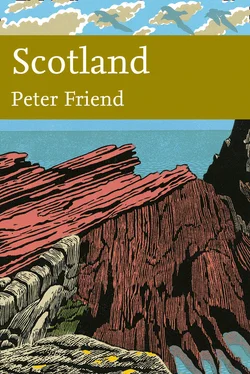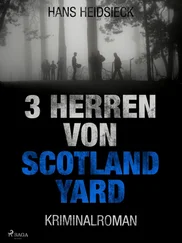Important amounts of sediment were also deposited by sediment-charged meltwaters flowing out from retreating glaciers, referred to as glaciofluvial deposits, and present in a variety of forms. Sediment may accumulate in channels, ponds and lakes trapped between lobes of glacier ice or between a glacier and the valley side. Where such sediment has a ridge or mound form, it is termed a kame; where it is a flat-topped mound, it is termed a kame terrace, and is likely to have been deposited in a lake. When sub-glacial meltwater drains through tunnels, the sub-glacial stream may deposit sediment as a surface stream would, but confined to the tunnel. The result is a long sinuous ridge of gravel, termed an esker. Outwash plains often build up downstream of the melting glacier, large plains of poorly sorted, stratified sediment deposited by braided streams. Sequences of terraces are often seen in these plains, formed by river incision. Kettle holes are also common features, formed by blocks of ice that become buried in outwash sediment, and then melt to leave behind a depression. Many of these kettles have been infilled with sediments, particularly peat, during the post-glacial times, but some are still visible today as small isolated lakes or deep water-filled depressions in boggy areas that were once the low-lying outwash plains.
A famous example of ‘kame-and-kettle topography’ is found in Nithsdale, north of Dumfries. Particularly on the eastern side of the valley, there are many short, linear glaciofluvial ridges separated by depressions and hollows. The relative relief between ridge crest and depression is usually between 8 and 25 m, and the ridges are relatively short, with very few being over 500 m long. The extensive gravel pit at Kilblane, for example, is developed in three such kame ridges. The coarse sediment that makes up these ridges, and other linear kame ridges in this part of Nithsdale, was probably deposited in meltwater channels that flowed between ice-cored ridges parallel to the ice margin. As the ice ridges melted, the sediment-filled channels became inverted to produce the kames seen today. Kame terraces are also seen on both sides of the Nith, with the best developed just east of Duncow (8 km north of Dumfries) at an altitude of around 55 m. Further north, in the mid-part of the Nith valley (south of Thornhill), a similar kame-and-kettle topography is seen. The glaciofluvial deposits of Nithsdale account for the rather large number of sand and gravel pits seen just north of Dumfries, now often flooded. Glaciofluvial deposits are relatively common elsewhere in Areas 1 and 2, such as in many of the valleys on the south side of the Southern Uplands and in the area around Stranraer.
The mapping of glaciofluvial deposits in the Nith Valley has allowed the reconstruction of the pattern of glaciofluvial drainage which developed during a late stage of deglaciation. The result shows a narrow marginal zone of ice-cored ridges and troughs in the north, feeding meltwater and sediments to the ice front north of Dumfries. This ice front is marked by a terminal moraine across the Nith valley, which is crossed by the River Nith in a gorge in Dumfries. Further southeast, the drainage fed outwash systems in the Lochar Water and Nith valleys. Today, this outwash plain underlies much of the uniformly flat surface southwest of Dumfries.
A closer look at Late Devensian ice-flow directions
The broad ice-flow pattern shown in Figure 53is useful, but presents a highly generalised picture; in reality, ice-flow directions over the course of the Late Devensian were somewhat more complicated. The large number of streamlined glacial deposits found throughout Area 1, particularly in the lowlands, has allowed a much more detailed reconstruction of Devensian ice flow. A recent study looked in detail at the glacial features present in the western part of Area 1, in particular at drumlins, erratic trains and glacial striae. It was found that several generations of these features can often be seen superimposed on one another, recording multiple passages of ice from different ice centres. These changing flow directions are summarised in Figure 54, and record the changing relative strengths of the Southern Uplands and Highlands ice centres.
Some of the earliest features in the western Southern Uplands indicate that ice from the Highlands was initially dominant during the Late Devensian, when it streamed southwards from the Firth of Clyde and crossed the Glenluce lowlands, producing north/south lineations. This Highland ice was then replaced over much of Area 1 by Southern Uplands ice, as shown by a southwest-oriented flow set running across Glenluce and the southern Rhins. A similar story is recorded by till deposits in the southern Midland Valley, around the margins of the Southern Uplands. For example, a vertical section cut by the River Nith at Nith Bridge, just south of Cumnock, reveals three tills deposited during the Late Devensian and separated by glaciofluvial sands and gravels. These tills have been carefully studied, and the bottom two were both found to have been deposited by Highland ice, which probably flowed across central Ayrshire from the Firth of Clyde area. The topmost till, by contrast, was deposited by ice originating in the Southern Uplands. There were, therefore, at least two distinctive phases of ice movement across central Ayrshire, with an initial advance of Highland ice being succeeded by Southern Uplands ice. The evidence at Nith Bridge matches similar evidence found across the southern Midland Valley, and the story indicated by streamlined landforms further southwest. It seems, therefore, that Highland ice initially expanded to encroach on the Southern Uplands, and that it was only as glaciation progressed that Southern Uplands ice became more dominant in Area 1. Further south, another major ice centre was established in the Lake District, and converging drift lineations at the tip of the Machars peninsula mark the confluence of this and Southern Uplands ice.
At the coldest stage of the last glaciation, around 20,000 years ago, Highland ice one again played a role – an ice stream flowed out from the Highlands and along the western seaboard of Area 1. As the ice moved down the Firth of Clyde, it scraped marine deposits off the sea bed and re-deposited them further south. These shelly deposits are found, for example, on top of a 10 m-high shore platform around the Mull of Galloway. The Highlands ice sheet also brought glacial erratics of the distinctive Ailsa Craig microgranite and Arran granite southwards, found today throughout the Rhins peninsula.
FIG 54. More detailed examination of local ice-flow directions during the Devensian (LGM is the Late Glacial Maximum that occurred late in the Devensian). After Salt and Evans, 2004
Following the glacial maximum, climate began to warm, and both the Southern Uplands and Highland ice centres contracted. Some time after Highland ice had retreated from the western seaboard, a phase of local ice expansion interrupted the general waning, and Southern Uplands ice once again flowed across the western part of Area 1. For much of the western, lowland parts of this Area, this would be the last time they were ice-covered, and the ice sheet left behind the extensive drumlin swarms described above. This Southern Uplands ice flowed southwestwards across the Rhins of Galloway, bringing with it erratics of Loch Doon granite. It also flowed roughly westwards across the Ballantrae and Girvan districts. In the Ballantrae area, flow was somewhat valley-contained, showing that the ice sheet was much thinner than it had been during the glacial maximum. Further north around Girvan, the lineations are particularly notable for their cross-cutting relationships, probably produced by the slight shifting in the main ice-dispersal centre with time.
The most recent flow set was also produced during the waning of the Southern Uplands ice sheet, again during a minor re-advance. This time, valley glaciers radiated out from a Southern Uplands dispersal centre located around Merrick, down valleys such as Nithsdale, Glenluce and northwards into the Midland Valley. Again, erratic trains from distinct granite outcrops around the Galloway area provide useful trackers, along with moraine ridges and drumlins. A local surge of Highland ice down Loch Ryan also occurred at this time, and a prominent moraine at the head of Loch Ryan (the Stranraer moraine) marks the outer limit of this re-advance.
Читать дальше












